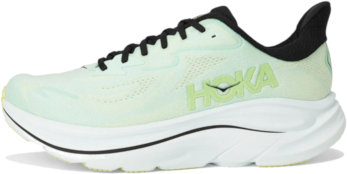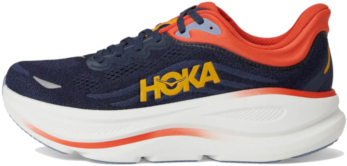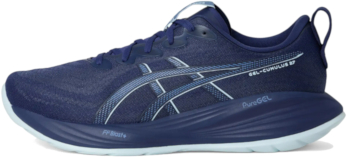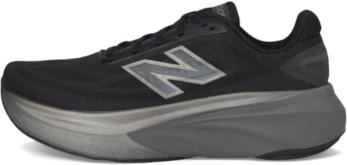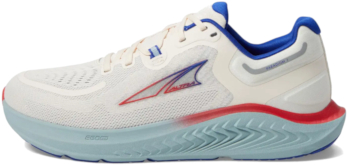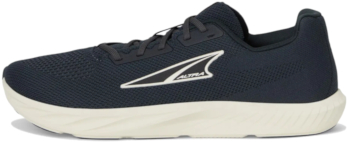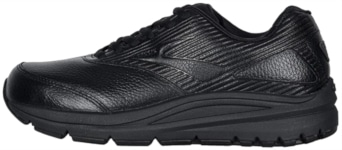Morton’s neuroma is a non-cancerous thickening of nerve tissue, typically located between the third and fourth toes, though it can also occur between the second and third. It often develops in response to pressure or irritation, especially from poorly fitting footwear that compresses the toes. A common underlying cause is a collapsed transverse arch, which increases stress on the interdigital nerve and leads to inflammation.
Symptoms may include burning pain, numbness, tingling, or the sensation of walking on a small object. Women are more commonly affected, likely due to narrow or high-heeled shoes, high-impact activities, or added weight that places more pressure on the forefoot.
Managing Morton’s neuroma often begins with conservative treatments such as rest, ice, compression, and elevation. However, wearing appropriate footwear is essential to reducing symptoms and preventing recurrence. Shoes with ample cushioning, a wide toe box, and strong arch support can help relieve nerve pressure and improve comfort during daily activities.
RELATED: Best Shoes for Metatarsalgia
Disclaimer! This blog post is for those dealing with mild, manageable Morton’s neuroma—the kind that’s more “annoying twinge” than “call an ambulance.” It’s especially geared toward our fellow older runners who’ve started making more noise getting off the couch than during their 10Ks. We’re not doctors (we don’t even play one on TV), so please don’t treat this as medical advice. If your metatarsal bones are staging a full rebellion, it’s best to chat with a real professional.
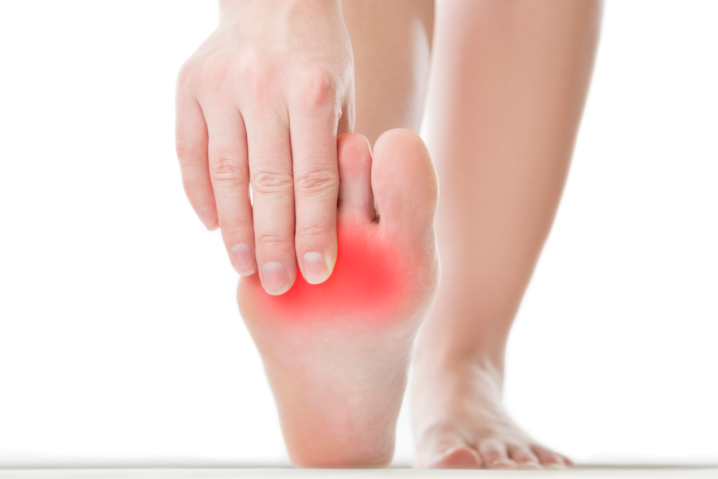
Importance of Choosing the Right Footwear
Impact of Footwear on Comfort
For individuals with Morton’s neuroma, footwear plays a critical role in managing pain and preventing further irritation. Shoes with narrow toe boxes can compress the nerves and worsen symptoms, while high heels and unsupportive soles increase pressure on the forefoot.
To reduce discomfort, it’s important to choose shoes with a wide toe box, cushioned insoles, and proper arch support. These features help relieve pressure on the affected area and promote better foot alignment, making daily activities more comfortable and reducing the likelihood of flare-ups.
What are the best shoes for Morton’s neuroma?
The best shoes for Morton’s neuroma are designed to reduce pressure on the forefoot and provide all-day comfort. Key features include a low heel-to-toe drop, a wide toe box to allow natural toe splay, a soft and flexible upper, and a well-cushioned midsole with adequate stack height for shock absorption. While no shoe can completely resolve the condition on its own, the options below are highly recommended by individuals with similar symptoms for their comfort, support, and pain relief.
The Best Shoes for Morton’s Neuroma
Here’s a list of the best shoes for Morton’s neuroma (in no particular order):
Hoka Clifton 10
If you’re dealing with Morton’s neuroma, you know the struggle—burning pain in the ball of your foot, tingling toes, and that feeling like you’re stepping on a pebble with every stride. The Hoka Clifton 10 may just be your foot’s new best friend.
One of the standout features of the Clifton 10 is its exceptionally plush cushioning. Built with HOKA’s signature compression-molded EVA midsole, it offers soft landings that help reduce pressure on the forefoot, which is critical for anyone managing Morton’s neuroma. This helps to absorb shock and ease the impact forces that usually aggravate the condition.
The early-stage Meta-Rocker geometry is another plus. It encourages a smooth heel-to-toe transition, reducing the need to push off excessively with the toes—lessening irritation to the nerve between the metatarsals. The forefoot construction is also stiffer, which prevents overloading the forefoot at toe-off.
When it comes to fit, the Clifton 10 has a generously shaped forefoot that provides enough toe splay and space for metatarsal pads or orthotics, should you need them. While it’s not the widest shoe in Hoka’s lineup, many runners with foot issues find its roomy toe box to be sufficient for avoiding pinching or compression.
Hoka Bondi 9
If you have Morton’s neuroma and every step feels like a jab to the nerves in the ball of your foot, the Hoka Bondi 9 might be the cloud-like solution your feet have been begging for.
First off, the Bondi 9 is Hoka’s max-cushion workhorse—and that’s exactly what makes it appealing for people with forefoot nerve pain. Its full-length EVA midsole is thick, soft, and highly shock-absorbing, helping to minimize impact forces with every stride. That extra cushion under the forefoot can significantly reduce pressure on the metatarsal heads, where Morton’s neuroma pain typically flares up.
The early-stage Meta-Rocker in the Bondi 9 further enhances forward motion without putting excessive strain on the forefoot. This rolling effect helps you “glide” through your stride, rather than push off hard with your toes—an essential feature for anyone trying to avoid aggravating nerve compression.
Another major plus: the spacious toe box. While the Bondi 9 isn’t the widest shoe in existence, it comes in multiple width options (including Wide and Extra Wide), making it easier to accommodate swelling, orthotics, or splayed toes. This added room helps relieve the squeeze that often worsens neuroma pain.
Bonus? The plush, breathable upper adds comfort without creating hot spots or rubbing—something you’ll appreciate during long walks or runs.
Hoka Gaviota 5
First, let’s talk cushioning. The Gaviota 5 features Hoka’s plush CMEVA midsole, delivering the kind of soft, shock-absorbing comfort that’s critical for relieving pressure on the ball of the foot. For older runners, this helps reduce nerve irritation and impact fatigue, making each step feel less jarring and more forgiving.
Next up: stability. The Hoka Gaviota 5 is a stability shoe, and it uses Hoka’s new H-Frame technology—a non-intrusive support system that guides your foot without being stiff or bulky. For aging feet dealing with both neuroma and overpronation (which often go hand-in-hand), this gentle support helps maintain proper alignment and distributes pressure more evenly across the foot.
And what about the fit? The Gaviota 5 features a refined upper with a broader forefoot and a more accommodating toe box, which is vital for those dealing with Morton’s neuroma. A cramped toe area can spell disaster, especially for older runners with sensitive nerves. With multiple width options available, there’s plenty of room for orthotics or metatarsal pads as well.
Lastly, runners will appreciate the smooth heel-to-toe transition thanks to the early-stage Meta-Rocker. It reduces the need to push off hard with the forefoot—easing the burden on the irritated nerves between the metatarsals.
ASICS Gel-Cumulus 27
The ASICS Gel-Cumulus 27 delivers balanced, all-around cushioning that older runners will appreciate. It features FF BLAST PLUS foam in the midsole—ASICS’ softest iteration of their lightweight foam yet—which helps absorb impact and lessen pressure on the forefoot. Combine that with Rearfoot PureGEL technology, and you’ve got a shoe that provides excellent shock absorption from heel strike through toe-off.
For runners with Morton’s neuroma, reducing forefoot pressure is essential. The Cumulus 27 offers a well-cushioned forefoot, and while it’s not a max-cushion shoe like some HOKAs, it does a solid job of distributing load evenly across the foot, easing the irritation on compressed nerves.
The upper also gets a noteworthy upgrade. The engineered mesh is soft and flexible, providing a comfortable wrap around the foot without squeezing the forefoot. It’s forgiving enough to accommodate slight swelling or allow space for a metatarsal pad or insert—features that older runners with neuroma pain will find beneficial.
Additionally, the Ortholite X-30 sockliner adds another layer of step-in comfort and mild support, helping to further cushion the sensitive areas under the ball of the foot.
While the toe box isn’t as wide as some brands, the Cumulus 27 does come in wide options, which is crucial for reducing forefoot compression—one of the key triggers of Morton’s neuroma pain.
New Balance Fresh Foam X More v6
If you’re an older runner dealing with Morton’s neuroma, the New Balance Fresh Foam X More v6 could be your foot’s version of a luxury spa day.
This shoe is all about maximum cushioning, and that’s exactly what you want when you’re trying to take pressure off the irritated nerves in the ball of your foot. The Fresh Foam X midsole in the More v6 is one of the thickest and softest New Balance has ever made, offering plush, pillowy comfort that absorbs shock and minimizes ground impact—especially in the forefoot where neuroma pain tends to flare up.
For older runners, that level of cushioning not only protects sensitive areas but also reduces joint stress, helping you stay active with less discomfort and fatigue.
The wide, rocker-shaped platform is another major win. The More v6 has a natural rocker design that promotes a smooth heel-to-toe roll, reducing the need for forceful toe push-off. That’s critical for Morton’s neuroma, since overloading the forefoot can worsen symptoms. This geometry helps you glide rather than grit your way through a run or walk.
And let’s talk fit—the More v6 has a roomy toe box and comes in multiple widths, giving your toes plenty of space to splay naturally. This reduces compression on the metatarsals and makes room for orthotics or met pads if needed.
Lastly, the engineered mesh upper is soft and breathable, offering gentle support without creating hotspots or pressure—something older, more sensitive feet will definitely appreciate.
New Balance Fresh Foam X 1080v14
If you’re an older runner battling Morton’s neuroma, the New Balance Fresh Foam X 1080v14 might be the high-tech comfort upgrade your feet have been waiting for.
What makes it stand out is its Fresh Foam X midsole, which offers a soft yet responsive underfoot feel, especially in the forefoot area. This is a huge win for runners with Morton’s neuroma, as it helps absorb impact and reduces the direct pressure on the ball of the foot—where nerve pain is most intense. The plush cushioning minimizes irritation with every step, making longer walks or runs far more tolerable.
Another highlight is the strategic rocker design, which supports a smooth transition through the gait cycle. For older runners, this helps reduce the need for forceful toe-off, easing the load on the metatarsals and preventing flare-ups in the affected area.
The upper has been redesigned with an engineered mesh that provides a snug but forgiving fit. It adapts to foot shape without feeling tight across the forefoot—a common problem for neuroma sufferers. And with wide sizing options available, there’s room for toe splay, orthotics, or metatarsal pads to further relieve pressure.
One more bonus? The 1080v14 balances softness with stability—it doesn’t feel mushy underfoot, which is ideal for older runners who want cushioning but still need a sense of control and support during movement.
Altra Paradigm 7
If you’re looking for a shoe that prioritizes both natural foot alignment and plush cushioning, the Altra Paradigm 7 is definitely worth considering for runners managing Morton’s neuroma.
Let’s start with Altra’s signature feature: the FootShape toe box. This is a game-changer for anyone with Morton’s neuroma. The Paradigm 7 offers ample space for the toes to spread naturally, relieving the compression that often irritates the nerve between the metatarsal bones. For older runners, who may also have bunions, hammertoes, or swelling, that roomy fit is pure gold.
Underfoot, the Altra EGO MAX midsole provides a soft, responsive cushion that helps absorb shock without feeling squishy or unstable. The forefoot cushioning is particularly helpful for reducing pressure on the ball of the foot—key for easing neuroma-related pain.
Another big win is the zero-drop platform, which keeps the heel and forefoot level. While this may take some getting used to if you’ve always run in traditional shoes with a raised heel, it encourages a more balanced stride and even pressure distribution across the foot—helping reduce overload on the forefoot.
The Paradigm 7 is also Altra’s most supportive shoe, thanks to GuideRail technology that provides subtle medial and lateral stability. For older runners who might have a little overpronation or instability, it offers support without stiffness or intrusion.
Finally, the breathable engineered mesh upper hugs the foot gently without squeezing sensitive areas, and the shoe is available in multiple widths to accommodate orthotics or toe spacers if needed.
Altra Escalante 4
If you’re a runner managing Morton’s neuroma and want a shoe that mixes lightweight responsiveness with forefoot relief, the Altra Escalante 4 is worth a look.
Altra’s signature FootShape toe box continues in the Escalante 4, offering generous width for your toes to spread. This design helps prevent compression of the nerve between the metatarsals—one of the main triggers of neuroma pain. For older runners, who may also see swelling or toe deformities, this roomy fit can greatly reduce pressure and discomfort.
The Escalante 4 uses Altra’s EGO midsole foam, which strikes a balance between softness and responsiveness. It provides enough cushion under the forefoot to absorb impact yet remains firm enough to maintain ground feel and stability. This helps mitigate the jolts that can exacerbate neuroma symptoms, especially on harder surfaces.
A consistent feature in Altra’s lineup is the zero-drop platform, meaning the heel and forefoot are level. By promoting a more natural gait and evenly distributing weight, it can help reduce localized stress on the ball of the foot—a key benefit for neuroma sufferers. Just be mindful: if you’re accustomed to a higher heel drop, allowing some transition time will help.
The Escalante 4 features a light, barely-there knit upper with Flywire anchors that provide gentle support without compressing the forefoot. For older runners, this means a comfortable, adaptive fit that minimizes hot spots or rubbing over sensitive areas—a small but critical comfort factor for neuroma pain.
While not a true rocker, the Escalante 4’s low-profile midsole and flexible plate design facilitate a smooth heel-to-toe transition. By encouraging gliding movement instead of toe-pushing, the shoe helps limit strain on the forefoot—a useful feature for neuroma relief.
Skechers Max Cushioning Elite 2
The Skechers Max Cushioning Elite 2 offers maximum cushioning from a very comfortable, supportive, and responsive midsole foam called ULTRA GO. This midsole is also excellent at absorbing shock, especially because of the added cushioned comfort from its high-rebounding insole called Goga Mat.
The Max Cushioning Elite 2 has a 6mm heel-to-toe drop with a Natural Rocker Technology (NRT), which helps in smooth heel-to-toe transitions. It has a spacious and breathable mesh upper, which provides comfort and lockdown that doesn’t irritate the toes.
In summary, the Skechers Max Cushioning Elite 2 offers a plush, shock-absorbing midsole, toe-box comfort (especially in wider options), a gentle rocker to reduce forefoot load, and strong affirmation from neuroma sufferers. For older runners seeking a comfort-first shoe to manage Morton’s neuroma during walks or recovery runs, it stands out as a supportive, budget-friendly option.
Brooks Addiction Walker 2
The Addiction Walker 2 is built on Brooks’ proven Supportive Rollbar platform, designed to maximize stability and control motion. For older runners, this helps keep the foot properly aligned, reducing the tendency to overpronate—which can exacerbate pressure on the forefoot and increase nerve irritation.
This walker features a Pillar technology-infused midsole that delivers firm but responsive cushion. While it’s more grounded than a plush running shoe, this structure offers excellent shock absorption without excessive compression, helping to alleviate pressure in the ball of the foot.
The Brooks Addiction Walker 2 comes in multiple widths (B, D, 2E, 4E), giving runners plenty of room for toe spreading. This generous fit is critical for minimizing metatarsal compression—one of the main issues that aggravate Morton’s neuroma. It also allows for options like custom orthotics or metatarsal pads.
The upper has a plush, padded lining, and gusseted tongue, creating a snug yet non-constricting feel. This is reassuring for sensitive feet, reducing friction or pressure points while walking or standing—common pain triggers for neuroma sufferers.
Although designed for walking, the Addiction Walker 2 offers a rocker-like motion thanks to its dense rubber outsole and stable shape. This helps ease transitions through your gait without a hard forefoot push-off—ideal for reducing strain on irritated nerves.
Heads up: As an Amazon Associate, we earn from qualifying purchases.
Best Shoes for Morton’s Neuroma FAQs
What are the best shoes for alleviating Morton’s neuroma pain?
For managing Morton’s neuroma, the most effective shoes prioritize comfort and pressure relief. Key features include wide toe boxes that allow natural toe alignment, ample cushioning to absorb impact, and reliable arch support to reduce stress on the forefoot. Brands such as New Balance, Brooks, and ASICS are frequently recommended for their supportive designs and focus on foot health. These shoes can help reduce irritation to the affected nerve, improve daily comfort, and support long-term foot function.
How can the right shoes help manage Morton’s neuroma symptoms?
Wearing the right shoes is one of the most effective ways to manage Morton’s neuroma. Supportive footwear helps maintain proper arch alignment, reduces friction that can irritate nerve tissue, and promotes even weight distribution across the foot. Shoes made with shock-absorbing materials can further minimize impact on the forefoot, easing discomfort during walking. With these features in place, a well-chosen pair of shoes can significantly improve mobility and make daily activities more comfortable.
Are there specific features to look for in shoes for Morton’s neuroma?
When selecting shoes to help manage Morton’s neuroma, it’s important to focus on key features that reduce pressure and provide support. Look for a wide toe box to allow natural toe alignment and prevent crowding. Solid arch support is essential to maintain proper foot structure and reduce strain on the forefoot. Cushioned insoles can help absorb impact and relieve pressure on sensitive areas, while a flexible sole promotes a natural walking motion. Together, these elements work to minimize discomfort and support overall foot health.
Final Thoughts on the Best Shoes for Morton’s Neuroma
After analyzing the top-rated shoes for individuals with Morton’s neuroma, several consistent features stand out. These shoes typically include a well-cushioned midsole with a high stack height to reduce impact on the forefoot, a low heel-to-toe drop to support natural foot positioning, and a rocker-style sole that promotes smoother transitions during walking.
Additionally, they offer a wide toe box to reduce compression on the toes and a soft, flexible upper that minimizes irritation. Together, these features help alleviate pressure on the affected nerve and improve overall walking comfort.
You may also like:

